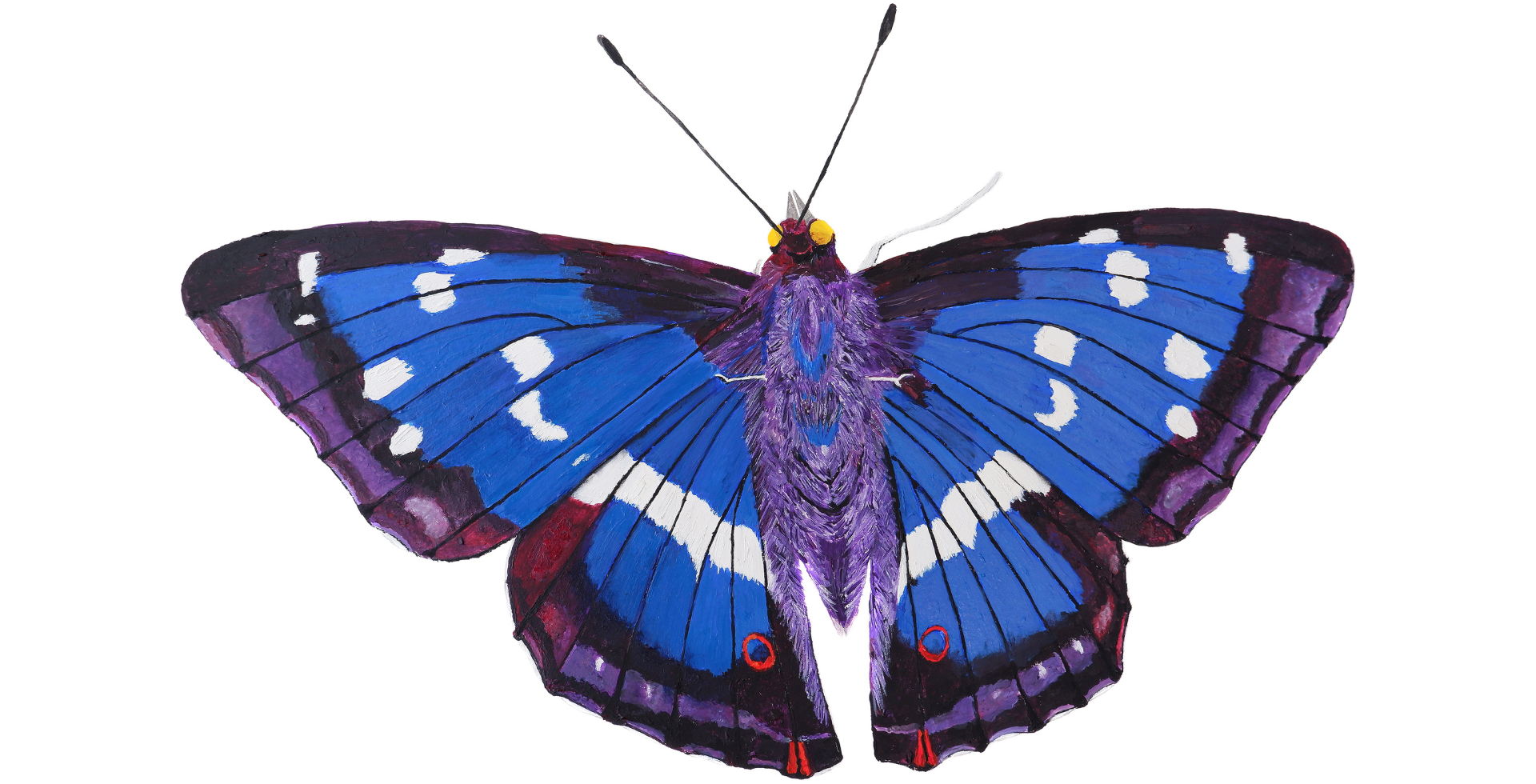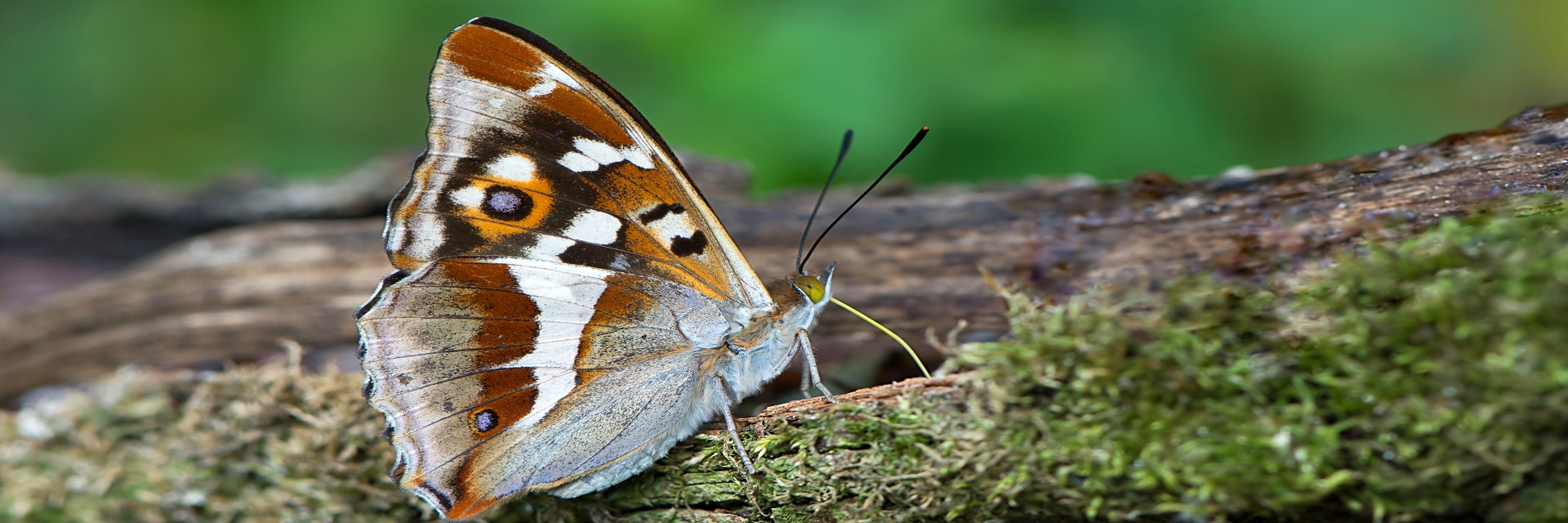Improved habitat for the purple emperor also provides habitat opportunities for a range of other wildlife. Goat willow foliage is eaten by the caterpillars of several moths, including the sallow kitten, sallow clearwing, dusky clearwing and lunar hornet clearwing. The catkins or ’pussy willow’ provide an important early source of pollen and nectar for bees and other insects and birds such as the nightingale.
Opportunities to create/improve/extend suitable habitat for this species include:
- Thinning to encourage the development of the woodland shrub layer
- Promoting goat willow in the shrub layer
- Controlling deer
- Managing drainage to conserve damp woodland areas
Creating and managing areas for the Purple Emperor will help deliver the following benefits to communities:
- Clean water
- Clean air
- Protection from and mitigation of environmental hazards
- Mitigation of and adaptation to climate change
- Thriving plants and wildlife
- Beauty, heritage and engagement


